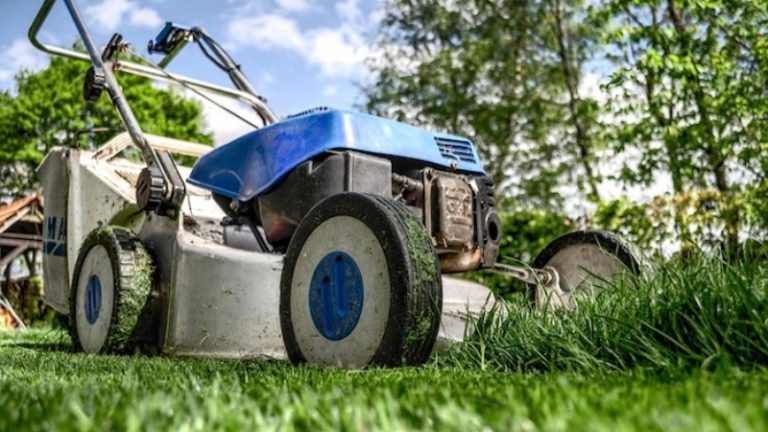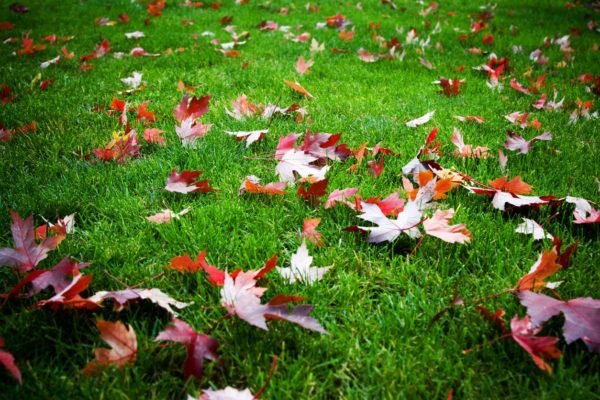The spring season brings colors and freshness to not just the nature around d us but also our daily lives. From vibrant clothes to beautiful gardens, everything in spring looks colorful and bright. But if you’re a resident of the Twin cities, there’s a good chance that your lawn is suffering damage from the cold winters making it look worn and faded. You can always hire a good Minneapolis Lawn Care Service to keep your gardens looking healthy and fresh in all seasons. However, if you’re a gardener or love to DIY, taking care of your lawn in spring can be a tough challenge. The harsh winter snow can really hurt the grass and plants in your lawn. It covers the top layer of the soil and causes dryness and snow mold. Hence, it’s important to rake, dethatch, mow, and fertilize the soil once the snow melts away.
Keep Your Lawn Clean
Ask anyone the first thing to do for lawn maintenance and they will tell you to keep it clean. While it’s common sense to maintain a certain level of cleanliness in your lawn, it’s not easy. Especially in the cold and harsh winters! But once the snow melts, the first thing you should do is clean the lawn. You should rake all the dead leaves, branches, twigs, and other stuff from the garden. Check your lawn thoroughly for any damage to soil or grass. If there are any bare or brown spots in the grass, it may be due to snow mold damage. It is better to find such spots and repair the damage early on.
Make Sure the Soil is Aerated

The soil suffers some damage in the winter months due t0o excess snow. But other factors like foot traffic, pets, etc. can also make your soil compacted. When the soil is compacted, it becomes dry, dense, and hard. Air and water can not penetrate deeply in dense soil which can lead to bare patches and damaged grass. You should make sure your oil is not dense and hard. When the soil is properly aerated, it prevents air and water from reaching the roots and hinders grass growth. So, you should aerate the soil to ensure healthy soil.
Test the pH of Your Soil
The pH of the soil is the balance of necessary nutrients and moisture levels in the soil. After a few years, the soil starts losing minerals and becoming unhealthy and worn. It can lose essential minerals like calcium, nitrogen, magnesium, etc. When the soil pH is low, your grass will also start looking dry and worn. If the grass in your lawn is looking brown and struggling to survive, it might be due to lack of nutrients in the soil. Hence, it is advisable to test the pH of the soil and add fertilizers when necessary.
Start Dethatching Early On
Dethatching is the process of removing dry, dead grass and bare patches from the lawn. All this thatch can accumulate in the lawn and suffocate the new growth. When you remove this unwanted trash from the garden, it gives me a new hope for a better tomorrow. But you need to start the dethatching early on in the spring to improve growth and keep your lawn looking healthy and green. Even if your lawn is very heavily damages and needs repair, dethatching is an important step in restoring its health.
Fertilize the Soil for Better Growth
Fertilizing the soil in regular intervals is important for better growth. However, fertilizing the soil in early spring after the damage from the harsh snow is necessary to maintain soil and grass health. The soil often loses its essential minerals due to the cold winters. Plus, removing the ice after winters also causes the soil to lose many nutrients. Hence, adding a good fertilizer to the soil after proper aeration and dethatching is the right choice. It males the lawn healthy and well-nourished to fight weed invasion and other climatic issues.
Regularly Mow the Lawn

Regular mowing can help keep your lawn looking healthy and green. Mowing removes the drying or dead parts of the grass blades and helps turn up the soil. The longer the grass is kept, the more deeper its roots. The leaves of a longer grass lawn contribute in building a robust and deep root system for the lawn. Deep roots means less soil erosion and climate damage. When you mow the lawn weekly, it will develop better root system and will easily resist the dry summer heat.
Water the Lawn Adequately and Regularly
Just like regular mowing, watering regularly is also a must for a healthy lawn. You should make sure the soil isn’t dry and has enough moisture. Water the lawn adequately so that it is easily absorbed. Prepare a watering schedule to help you organize and maintain the lawn. Also, it is important to consider the type of grass, the condition of soil, and the irrigation system used to prepare an effective watering schedule. It is advisable to use automatic sprinkler system and control the water runoff for healthier and greener lawn.
Plant New Annuals Later in Spring
Spring is often considered the best season to plant. In spring the soil is fresh after a long, dormant winter and it is ready to grow. When you plant anything in spring, it gets the best soil and climate conditions for a speedy and healthy growth. It is best to plant annual plants during mid-to-late spring. While it is tempting to plant in the early spring after mowing and fertilizing. However, the best time to plant annuals and flowering plants is certainly in late-may to June.
Winters are dormant months for the grass and soil while spring brings a chance of a fresh start. If you get a good start in early spring, then it becomes easier to maintain the lawn. If you want to keep your lawn healthy and green in the coming spring, use the above tips and make it come alive with beauty and color!








